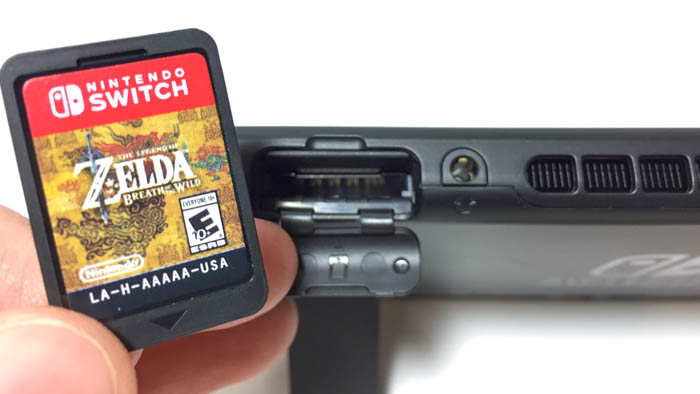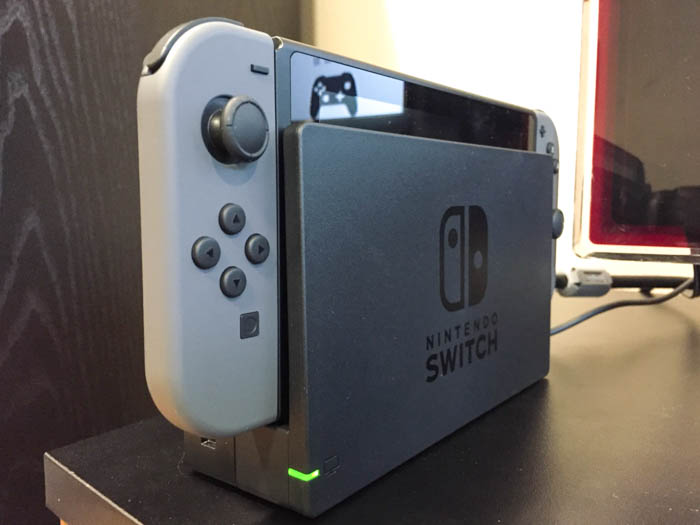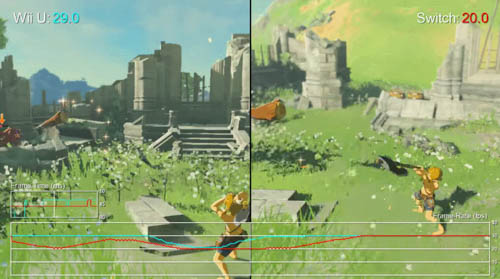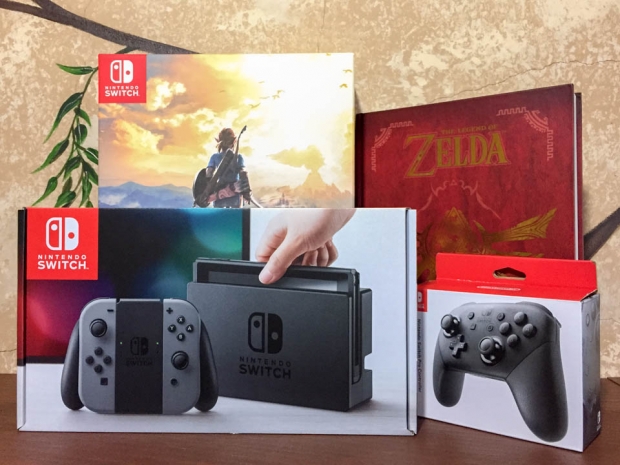Index
Gameplay
Each Nintendo Switch game arrives in cartridge form called a Game Card measuring 35mm wide, 33mm tall and 3.8mm thick (1.38 x 1.30 x 0.15 in). These are the same physical size as the cards used on the DS, DSi and 3DS, but now feature up to four times more storage capacity.
Gameplay in The Legend of Zelda: Breath of the Wild is reminiscent of a hybrid between The Legend of Zelda: The Wind Waker and The Legend of Zelda: Skyward Sword, but in a much more open and expansive world. Link can scale walls, use hang gliders, ride a variety of horses except for Epona, shoot bow and arrows, cooking, play various musical instruments with magical effects, swap out worn down weapons arsenal to fend off enemies, and gather valuable resources. For this game, it is more ideal to use the Nintendo Pro controller over the Joy-Con controllers because of its larger hand grip, D-Pad and button layout. There is also relatively little to no input lag when using this controller.
Weapon durability is one of the more challenging aspects of the game, as items like the Guardian sword tend to break and a player’s inventory will mostly be filled with the same item – like clubs – for an extended period of time. One effective method of combating enemies, however, is to learn how wind, fire and other in-game elements have an effect on combat. For instance, throwing a bomb with the direction of the wind will be useful for opening gates or taking down enemies, while fire can spread in suitable locations for taking down larger structures.
There are also plenty of peaks and ranges to survey wide swaths of landscape and plan excursions into uncharted waters, mountains, forests, shrines, islands, stables, ranges and plains. The days when Hyrule acted as a central hub to connect various towns and plains in the game is now over. Climbing is perhaps one of the more acclaimed features in this game, and many expect it to become a cornerstone for successive releases in the franchise.
Gameplay Performance

In the first few minutes of playing The Legend of Zelda: Breath of the Wild in docked mode, there was not much in the way of framerate drops or input lag. In complex environments with significant foliage and shading, the game maintains an moderately average 30fps threshold, though not low enough to remind us of the 20fps average from Ocarina of Time running on the Nintendo 64. The folks at Digital Foundry did some deeper digging and discovered that the game uses dynamic scaling to keep the resolution around the 30fps mark, and suggests that when the game hits system power limitations, its resolution will drop to 90 percent on both vertical and horizontal axes.
In undocked tablet mode, the game will drop in resolution to 1152x648, or 81 percent of the standard 720p resolution for that gameplay mode. In docked mode, the game will also downscale to 1440x810 during heavy texture environments, or 90 percent of the standard 1600x900p resolution in this gameplay mode.
The Legend of Zelda: Breath of the Wild - Wii U (left) and Switch (right) performance
Further investigation reveals that the memory speed jump from 1331MHz in undocked mode to 1600MHz in docked mode is only a 20 percent bandwidth increase to sustain a 56 percent increase in resolution. When compared to the Wii U version of the game, some outlets have noted that the Switch will render the game slower in some areas due to a “hidden bottleneck” suggesting that the game world is partitioned differently on both platforms. At most, the difference is about 8 fps and the game is set to hard-lock at 20fps on both consoles to avoid any N64 scenarios.
As for battery life, Nintendo’s official claim is that Breath of the Wild can run for 3 hours on a single charge, though independent tests have now confirmed this number to be between 2 hours 45 minutes to 3 hours 15 minutes depending on settings.




